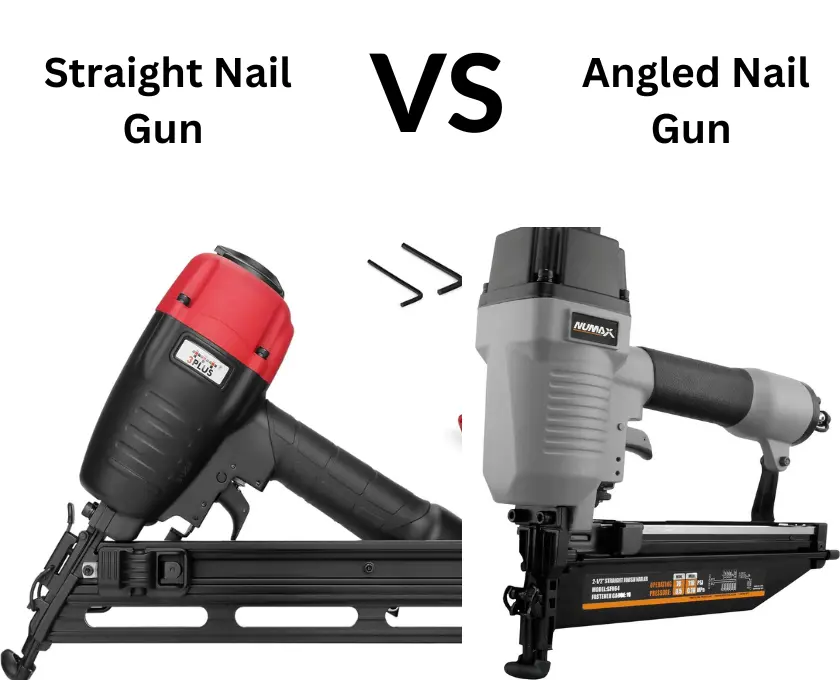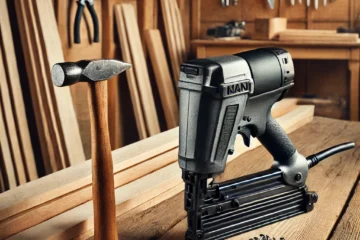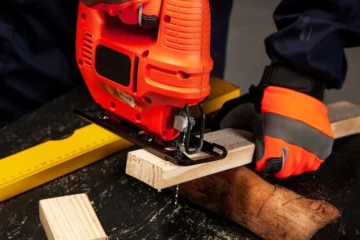When it comes to nail guns, choosing the right tool for your project can make all the difference in the world. One of the most common dilemmas for both DIY enthusiasts and professionals is deciding between an angled nail gun and a straight nail gun. Each has its advantages and specific uses, and understanding the key differences can help you make an informed decision.
In this comprehensive guide, we’ll explore the differences between angled and straight nail guns, their unique advantages, and how to choose the right one for your projects. By the end, you’ll have a clear understanding of which tool is best suited to your needs.
The Importance of Choosing the Right Nail Gun
Whether you’re framing a house, installing trim, or taking on a DIY project, nail guns are essential tools that can save you time and effort.
However, not all nail guns are created equal, and the choice between an angled and straight nail gun is more significant than it might seem.
The primary difference between these two types of nail guns lies in the angle of the magazine that holds the nails. This angle affects how the nail gun can be used in tight spaces, the type of nails it can fire, and even the overall balance and feel of the tool in your hand.
Before diving into the specifics of each type, let’s first clarify what we mean by “angled” and “straight” nail guns.
What is a Straight Nail Gun?
A straight nail gun has a magazine that is aligned perpendicular to the firing mechanism, meaning it holds the nails in a straight line.
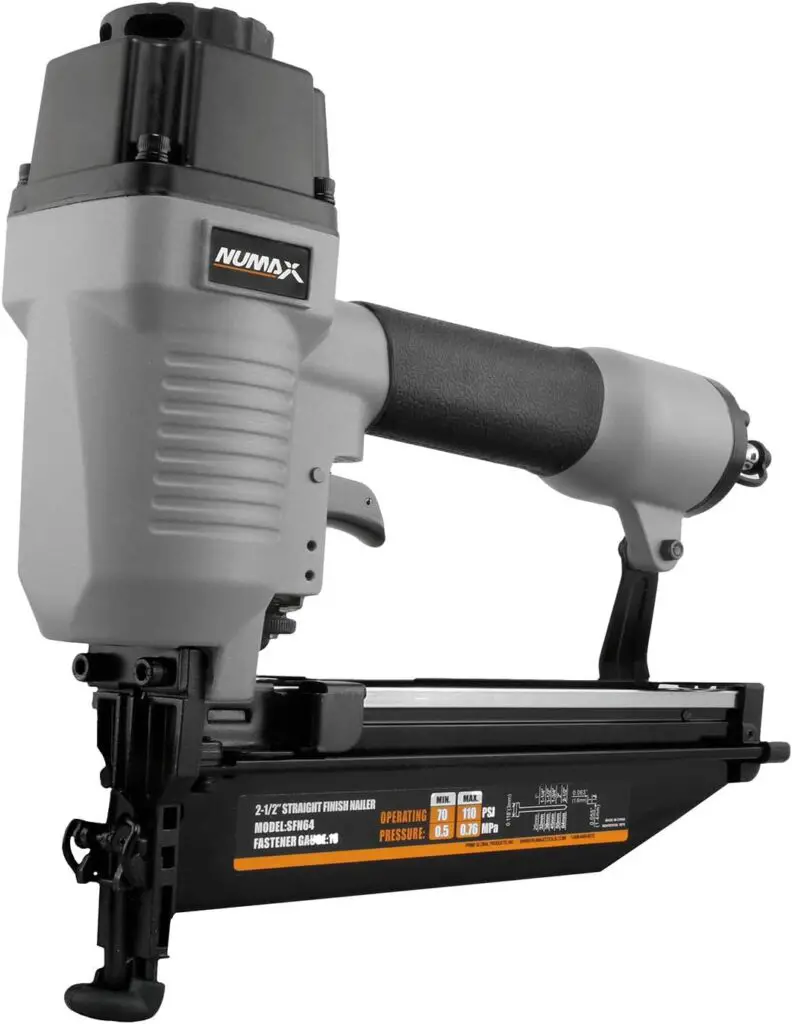
The nails used in straight nail guns typically have a smaller gauge (often 16-gauge), which makes them thinner and less visible, making them ideal for finish work, such as:
- Installing trim and baseboards
- Cabinetry work
- Molding
Advantages of a Straight Nail Gun
- Precision for Fine Finishing: Straight nail guns are perfect for precision work. The smaller 16-gauge nails create less of a visible hole, reducing the amount of putty and sanding needed to achieve a smooth finish.
- Accessibility: Since straight nail guns are often more compact and lighter, they are easier to handle in certain tight spaces, particularly when working on smaller projects or fine detailing.
- Cost-Effective: Straight nail guns tend to be less expensive compared to angled ones, both in terms of the tool itself and the nails required.
Drawbacks of a Straight Nail Gun
- Limited Reach in Tight Spaces: The straight magazine can make it challenging to reach corners or tight spaces, limiting its use in more complex or confined areas.
- Nail Strength: The smaller nails used in straight nail guns are less robust than those used in angled nail guns, making them less suitable for heavy-duty projects like framing or outdoor work.
What is an Angled Nail Gun?
An angled nail gun, as the name suggests, has a magazine that is set at an angle to the firing mechanism. These tools typically use larger gauge nails (15-gauge), which are thicker and more durable than the nails used in straight nail guns.
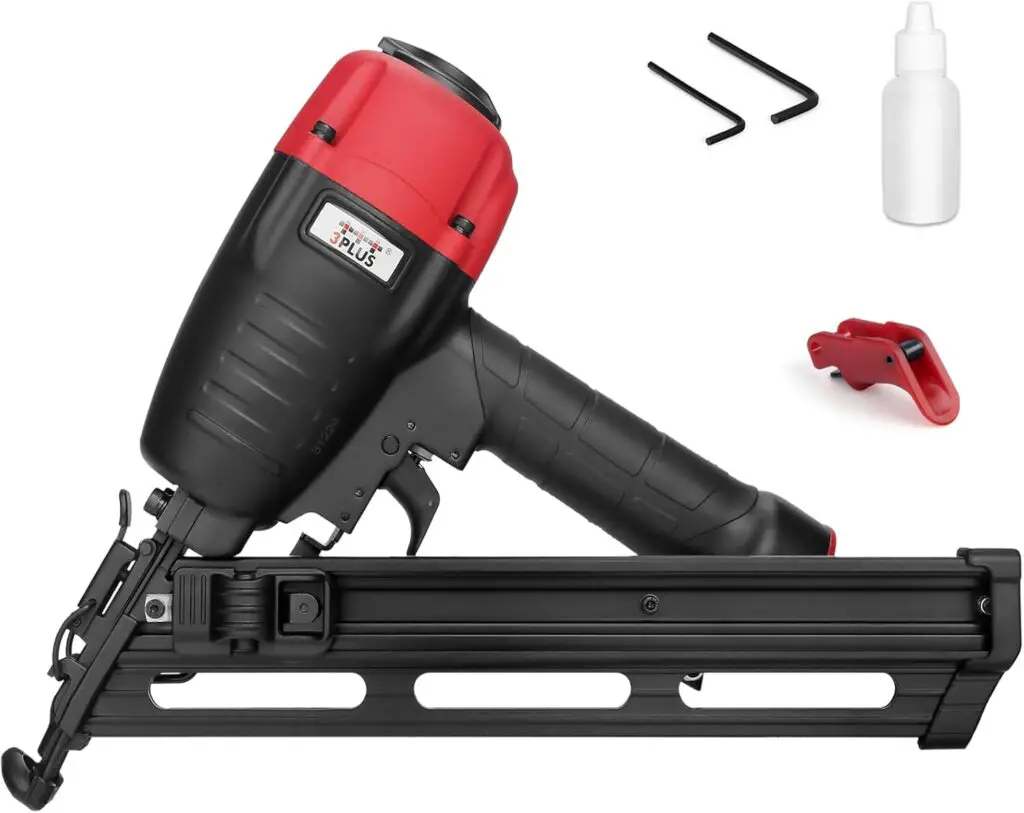
The angled magazine allows for better maneuverability in tight spaces, making angled nail guns ideal for:
- Framing
- Roofing
- Working in confined areas or odd angles
Advantages of an Angled Nail Gun
- Versatility in Tight Spaces: The angled magazine provides greater flexibility and makes it easier to reach corners, awkward angles, and tight spots where a straight nail gun would struggle.
- Stronger Nails: Angled nail guns often use 15-gauge nails, which are thicker and stronger than the 16-gauge nails used in straight nail guns. This makes them more suitable for heavy-duty work, such as framing or outdoor projects where more holding power is required.
- Professional-Level Finish: While angled nail guns are often seen in professional settings, they also allow for a more refined finish on certain projects. The slightly larger nail holes can be filled and sanded, but the added holding power of the thicker nails provides more stability.
Drawbacks of an Angled Nail Gun
- Higher Cost: Angled nail guns, along with their nails, tend to be more expensive than straight nail guns, making them a bigger investment upfront.
- Less Ideal for Fine Detail Work: The thicker nails used by angled nail guns create larger holes, which may require more filling and sanding to achieve a smooth, finished look.
Angled vs Straight Nail Gun: A Side-by-Side Comparison
| Feature | Angled Nail Gun | Straight Nail Gun |
| Magazine Position | Angled | Straight |
| Nail Gauge | 15-gauge (thicker) | 16-gauge (thinner) |
| Best For | Framing, roofing, confined spaces | Trim, molding, fine finishing |
| Maneuverability | Better in tight spaces | Limited in tight spaces |
| Nail Strength | Stronger | Weaker |
| Cost | Higher | Lower |
| Hole Size | Larger | Smaller |
| Tool Weight | Heavier | Lighter |
Step-by-Step Guide: How to Choose the Right Nail Gun for Your Project
Choosing between an angled and straight nail gun comes down to the specific needs of your project.
Here’s a step-by-step guide to help you make the best decision:
Step 1: Assess the Type of Project
Consider the nature of your project. If you’re working on detailed finish work like installing trim or molding, a straight nail gun is likely the better choice.
For heavier-duty tasks like framing or working in tight spaces, an angled nail gun will serve you better.
Step 2: Evaluate the Working Space
Take into account the space in which you’ll be working. If you’re dealing with tight corners, odd angles, or confined spaces, an angled nail gun provides better maneuverability.
On the other hand, if you’re working on flat, open surfaces, a straight nail gun might be more convenient.
Step 3: Consider the Nail Strength Required
Think about the strength needed for your project. If you’re working on tasks that require stronger nails with more holding power (like framing), an angled nail gun with thicker nails is ideal.
For lighter, more detailed work, a straight nail gun with smaller nails is sufficient.
Step 4: Budget and Tool Cost
Determine your budget. If cost is a significant factor, a straight nail gun is generally more affordable.
However, if you need the additional functionality and durability of an angled nail gun, it may be worth the extra investment.
Step 5: Think About Future Projects
Consider future projects when making your decision. If you plan to do a variety of projects, it might be beneficial to invest in an angled nail gun for its versatility.
Conclusion: Which is Right for You?
When deciding between an angled and straight nail gun, the choice ultimately depends on your specific needs and the nature of your projects. If you’re working on fine finish work, a straight nail gun with its smaller nails and lightweight design is ideal. However, if you need a versatile tool that can handle more complex or heavy-duty tasks, an angled nail gun is the better choice.
By understanding the differences between these two types of nail guns, you can make an informed decision that will enhance the quality and efficiency of your work.

